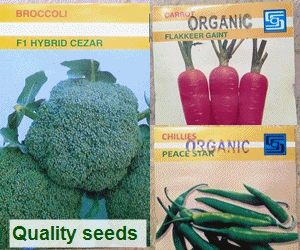The agriculture cycle appears to be in hassle all over again, despite the sooner optimism. After hitting a paltry growth charge of 0.85 per cent final year, higher making plans and execution was expected to deliver a higher enlargement price.
However, things are threatening to worsen as a substitute of higher — mainly because of climatic impact however with different components, similar to emerging value of manufacturing, poor era and lack of expertise on emerging sectoral problems, contributing as well.
Cotton crop by myself is expected to cost the nationwide exchequer over $2 billion in imports and produce the national agricultural economy down by means of a whopping Rs300bn
Six weeks of erratic weather — from the second half of August to the tip of September — badly affected the agriculture sector. Unusually top temperatures (hovering within the mid-40s level Celsius) and accompanying strong winds broken the rice and maize vegetation on the grain formation level. Sugar cane and cotton had been also adversely impacted. Together those four vegetation dragged down the performance of the sphere, the level of which will probably be detailed within the next financial survey.
Right now, both farmers and agriculture officers are calculating the loss and differing extensively on its extent. The farmers suppose they have got lost neatly over 20pc of the rice production in Punjab. The Punjab Agriculture Department, then again, thinks another way. It concedes that the sphere was once impacted via climate adjustments however insists that the manufacturing target of 4 million tonnes used to be surpassed as rice used to be sown on 5m acres against a target of four.7m acres, thus compensating for the loss.
The farmer and traders don’t believe this evaluate. Shahzad Malik, a major trader and exporter estimates the loss at 15-20computer this season and cites box experiences to confirm his claim.
The case of maize, an autumn crop sown in overdue July and harvested in October, is the same. Official figures put manufacturing at 6m tonnes against a target of five.3m, while farmers from central Punjab estimate a 15pc yield loss as high temperatures adversely impacted grain formation and weight on the pollination level. They suppose reliable figures are inflated by means of no less than 25computer.
With grain loss, the farmers have also misplaced purchases from the silage industry since it does no longer assist produce milk in cattle.
Both farmers and officers agree that cotton and cane suffered huge losses which could dent general sectoral enlargement rate. The most a very powerful loss stems from cotton for which the rustic is anticipated to trail the objective by means of a massive determine of 6m bales.
By any stretch of creativeness, the country will probably be smartly under its 15m bales target with the loss led via Punjab that had a goal of 10m bales however ended 32pc under goal at 6.8m bales. The province was supposed to sow cotton over five.3m acres however lined four.6m acres only. It failed its own revised manufacturing target of 7.9m bales by way of 1.1m bales or 14pc. The cotton crop alone is expected to cost the national exchequer over $2 billion in imports and bring the nationwide agricultural economy down through a whopping Rs300bn.
Sugar cane’s story is equal to that of the other 3 crops. Official figures settle for a loss of 2m tonnes — 42m tonnes production against the target of 44m tonnes. However, the farmers insist that the loss tally is set 2-3m tonnes upper.
“If farmers continue suffering financial losses on all major Kharif crops, where will they get the money to invest in Rabi crops?” says Ibrahim Mughal, a farmer and the pinnacle of an agriculture assume tank in Lahore. General inflation, caused via the present executive, has also greater the quantum of funding required.
Instead of Rs1,400, a urea bag now prices Rs2,200. A Di-ammonia Phosphate bag prices Rs3,800 whereas its value was once Rs2,400 two years ago. 1,000,000 tube wells and 800,000 tractors in Punjab run on diesel which prices Rs130 per litre.
As a result, the cost of manufacturing of wheat (a Rabi crop) will upward push above Rs1,500 in line with 40kgs. But the government is retaining the legitimate price at Rs1,300 in line with maund. People might sow wheat for meals security but it does now not make sense as a business challenge.
“The country has never had such huge tracks of fellow land in October as it has this year but farmers are still confused about what to sow,” explains Abad Khan, a farmer from central Punjab. With all main crops — rice, maize, cotton — pulled off the bottom the land is empty however farmers are in a wait-and-watch scenario as they are not sure of everything including weather, input and output costs and policy environment.
According to the final Economic Survey of Pakistan, the agriculture’s low expansion charge was once because of the abysmal performance of the crop sector which registered a negative 4.4pc growth charge against a target of 3.6pc. As things stand, the rustic is heading against a repeat efficiency; let’s hope for the most productive for Rabi plants.




